Maine Lobster Chowder: Spilled Milk #313
Rich, creamy and loaded with lobster, this is my tribute to Maine.
Keep scrolling for Andrew’s video of the week and the recipe for Maine lobster chowder—there’s no paywall!
I’m partnering with USA Today to share my summer travel tips and recommendations for destinations across the United States. From Maine to Texas, we’re exploring my favorite restaurants, accommodations and things to do around the country.
I’ll also be cooking recipes inspired by each location and answering all your travel questions. You don’t want to miss a moment of our journey together—become a paid subscriber to Spilled Milk!
I love seafood chowders and stews, regardless of where they originate. Seafood meals in a bowl are a global thrill for me. Growing up on the water in New York, Manhattan clam chowder was my first love. Japanese seafood nabe became my second because my father introduced me to it in the early ‘70s when the first Japanese restaurants opened in our neighborhood. I make a dozen different types of seafood meals in a bowl, all of which are on my website, from Cioppino to a Scallop Pan Roast.
Need an example of other dishes where seafood is the star and the bowl is your passport? GO!
Bouillabaisse – France (Provence)
A saffron-scented fish stew with Mediterranean roots, classically made with multiple types of local fish, fennel, tomatoes and orange zest.Vatapá – Brazil (Bahia)
Creamy and rich with shrimp, coconut milk, bread, peanuts and dendê oil. Afro-Brazilian soul food in a bowl.Cioppino – USA (San Francisco)
Italian-American fisherman's stew with Dungeness crab, mussels and tomato-wine broth, invented on the docks of North Beach.Moqueca – Brazil (Espírito Santo)
A tomato-based stew of fish and/or shrimp with lime, garlic, onion and cilantro, sometimes with coconut milk depending on the region.Tom Yum Talay – Thailand
A spicy, sour broth brimming with shrimp, squid or fish, fragrant with lemongrass, lime and galangal.Sinigang na Hipon – Philippines
Sour shrimp stew made with tamarind, tomatoes and leafy greens—refreshing and tart.Laksa Lemak – Malaysia
Coconut milk-based noodle soup with shrimp or fish cakes, chili and herbs, a fusion of Malay and Chinese flavors.Maeuntang – Korea
Spicy fish stew with cod or pollock, vegetables, tofu and plenty of gochugaru (chili flakes).Chupe de Camarones – Peru
A creamy shrimp chowder enriched with milk, cheese, potatoes and corn, often spiked with aji amarillo.Ukha – Russia
A clear, herby fish soup traditionally made with perch, pike or ruffe and flavored with dill and peppercorns.Yassa Poisson – Senegal
Grilled fish stewed in an oniony, mustard-lemon sauce, often served over rice in a bowl.Sayadieh – Lebanon
Spiced rice and caramelized onion base with stewed or fried fish, topped with toasted nuts and lemony sauce.Halászlé – Hungary
A fiery red paprika-spiced freshwater fish soup, often made with carp or catfish.Kakavia – Greece
Fisherman’s stew from the Aegean, with bony fish, olive oil, lemon and herbs—simple, bright, briny.Zarzuela de Mariscos – Spain (Catalonia)
A seafood symphony of mussels, clams, shrimp, squid and lobster in a rich tomato-brandy broth.Misoshiru with Clams – Japan
A delicate miso soup with littleneck clams or asari, often served as a light seafood meal.Marmitako – Spain (Basque Country)
Tuna and potato stew once favored by Basque fishermen, perfumed with pimentón and peppers.Caldo de Mariscos – Mexico
Spicy tomato-based seafood soup loaded with shrimp, octopus and crab, bright with lime and cilantro.Pepper Soup with Fish – Nigeria
Fiery, herbal and restorative, this thin broth is spiced with calabash nutmeg and hot chilies.Kari Ikan – Indonesia
A curried fish stew with tamarind, turmeric and lemongrass, often served over rice or with roti.
And my favorite Thai, Vietnamese and Chinese seafood soups and hot pots are a list all of their own. Stunners. So the genre is global, but let’s talk Maine Lobster Chowder, shall we?
Chowder is one of America's most comforting culinary traditions, a hearty, sometimes creamy soup with deep roots in New England’s maritime culture. The word "chowder" derives from the French chaudière, a cauldron used by fishermen to make stews with the day’s catch. French, English and Nova Scotian settlers brought their stew traditions to North America's northeastern coast in the 18th century, where they added Native American ingredients such as clams and corn.
New England clam chowder, the most iconic variety, emerged in the early 1800s, combining clams, salt pork, potatoes, onions and milk or cream. By the mid-19th century, it was a fixture in Boston’s seafood houses and coastal homes alike. Its creamy richness reflects both Yankee frugality—stretching local seafood with dairy and starch—and the region’s dairy farming tradition.
In contrast, Manhattan clam chowder swaps cream for tomatoes and often adds celery and peppers. Though its exact origins are murky, the tomato version gained popularity in the early 20th century, especially among Italian-American communities. It was so controversial in New England that in 1939, a Maine legislator proposed outlawing tomatoes in chowder.
Other regional chowders abound. Rhode Island’s clear broth chowder, free of dairy or tomatoes, is a briny, minimalist variant. In the South, corn and shrimp chowders appear. On the Pacific Northwest coast, salmon and razor clam chowders reflect the local vibe of the area.
Still, New England’s version reigns supreme. It's more than a dish—it's a cultural artifact served at church suppers, ski lodges and seaside shacks. Whether thick or thin, purist or modernized, chowder is a spoonful of American history, ladled from the Northeast’s rocky shores to the rest of the country. It’s the taste of home for generations who’ve lived by the sea.
Now about lobster.
Lobster has long been entwined with New England’s identity, but its journey from reviled sea insect to luxury delicacy is a tale of reinvention. When European settlers arrived in the 1600s, lobsters were so plentiful they washed up in piles on the shore. Native Americans used them as fertilizer and bait, and colonists viewed them as food of last resort—fit for prisoners, servants or the poor.
Lobster fishing as an industry began in earnest in the 19th century, especially along the coasts of Maine and Massachusetts. Wooden traps or “pots” revolutionized the harvest, allowing fishermen to selectively catch and sustain local populations. Canning technology in the mid-1800s made lobster accessible nationwide, but fresh lobster still carried a lowly reputation until the early 20th century.
The tide turned during the Gilded Age, when lobster began appearing on fine dining menus in New York and Boston, served steamed or in elegant salads. Post-WWII tourism in Maine further cemented its image as a quintessential New England indulgence.
I love lobster. I love chowder. This is a recipe dedicated to my father and his husband, longtime residents of Portland, Maine and two men who loved that city and that state as much as anyone I have ever met.
Recipe: Lobster Chowder
Steam 4.5 lbs. of lobster until water is just boiling. I like to use 3 averaging 1.5 lbs. Cool and shuck the meat (chop the meat, BTW) reserving meat/roe/tomalley to a bowl in the fridge with the juices from the lobster bodies.
Place shells and a few tablespoons of olive oil in a large pot. Add your vegetable trimmings, seasonings, herbs and tomato paste.
Toast the shells in the oil, breaking them up with your hand. I leave out the heavy claws and I remove the lungs from the bodies. Don’t burn anything.
Deglaze with 1/2 cup of brandy and cook until almost dry. Add a cup of wine and cook until almost dry. Add 7.5-8 cups of seafood broth or shellfish broth (or a combo). Add 1 cup of dashi. Bring to a simmer. Cover and cook for 45 minutes.
Briefly puree with an immersion wand. You don’t need to make it homogenous, just break some of the bodies and the veg up.
Strain through a heavy mesh strainer or colander, pressing down to get all the liquid from the shells and bodies. Place the strained rich broth in pot on the stove.
Sauté a cup and a half each of sliced baby new potatoes, diced celery, diced onions, sliced carrots, sliced leeks, herbs, etc. in some butter or olive oil. Add them to the broth and simmer for 20-25 minutes. Add a cup or so of cream. Cook for 5 minutes. Add the reserved lobster meats, tomalley and roe.
Season with salt and some freshly chopped chives, parsley and tarragon
Serve and enjoy.

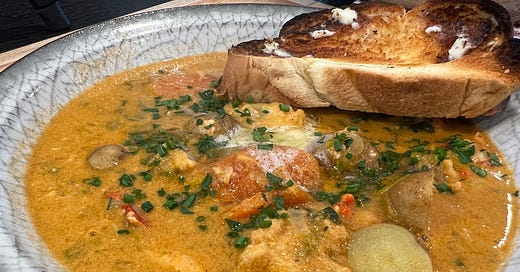




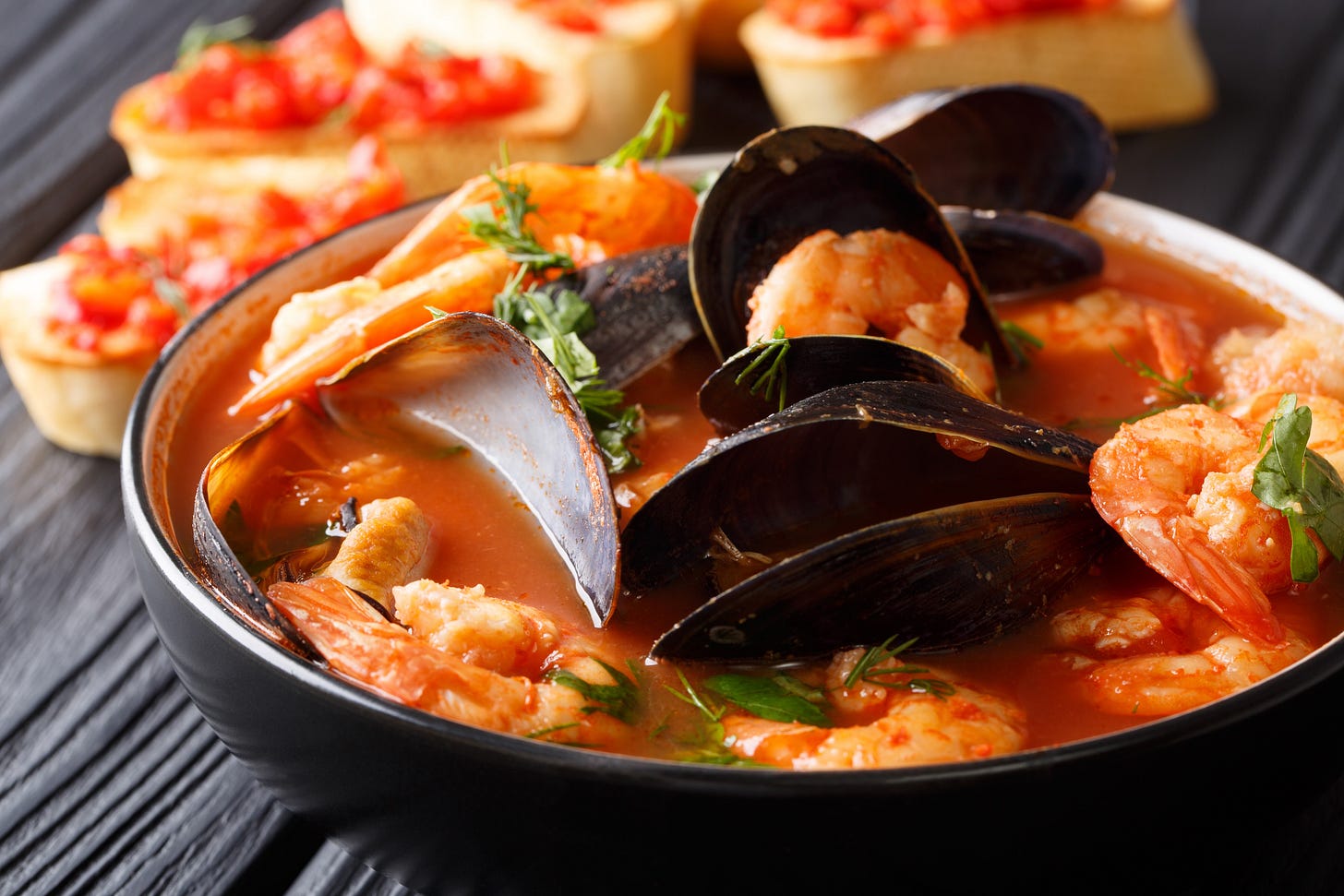
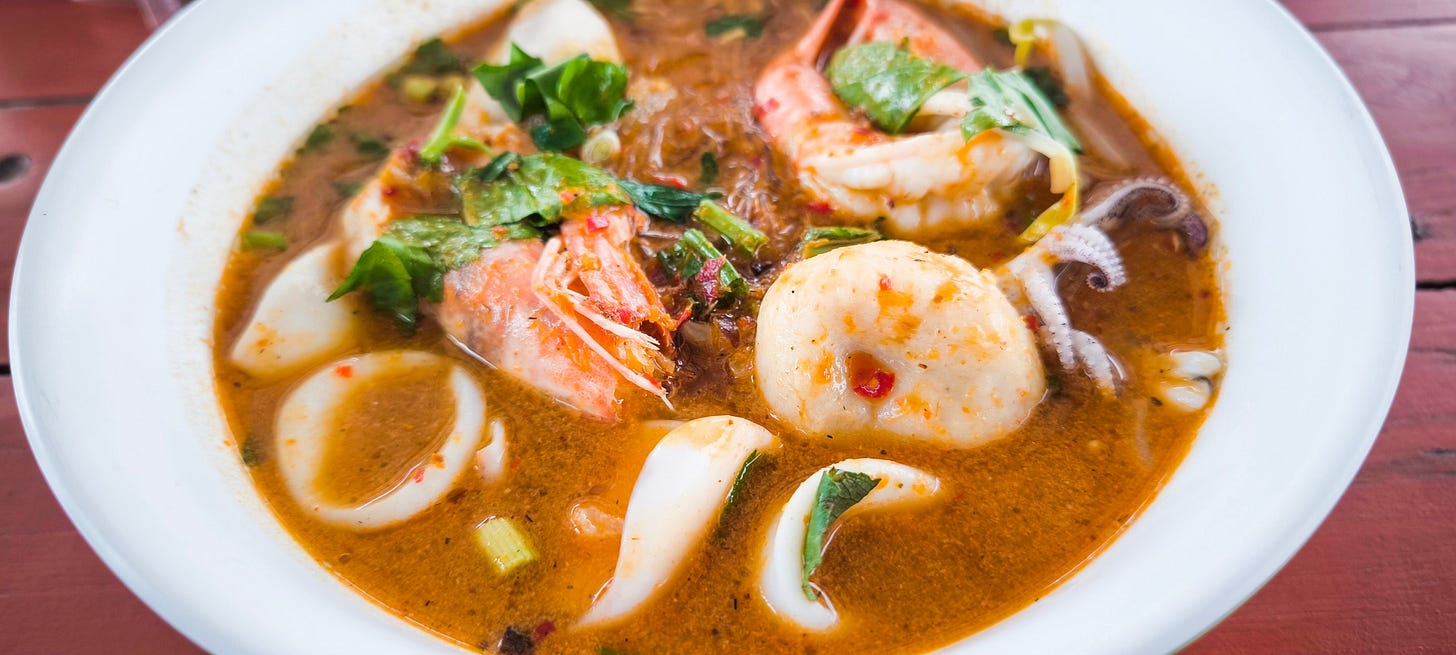
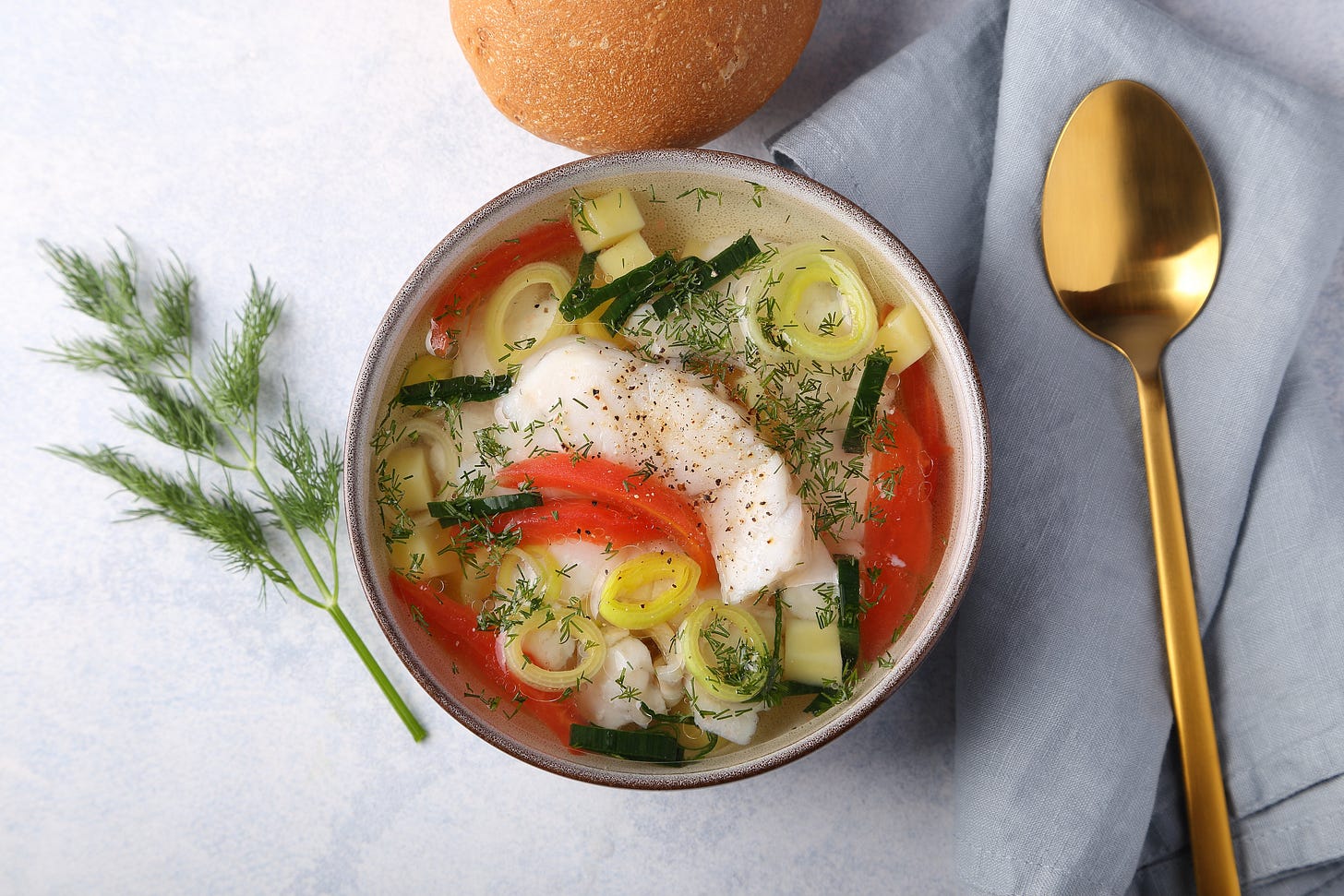
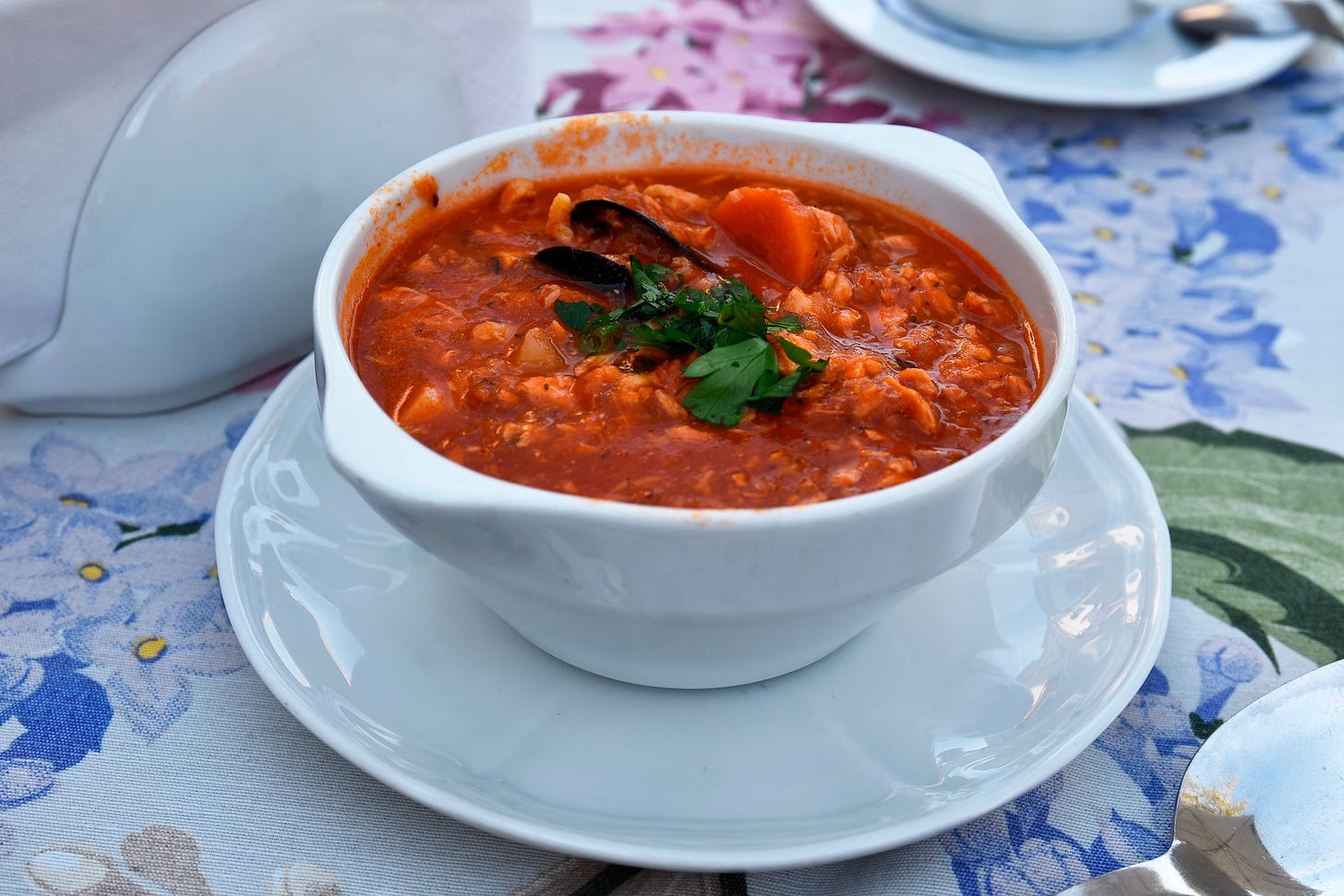
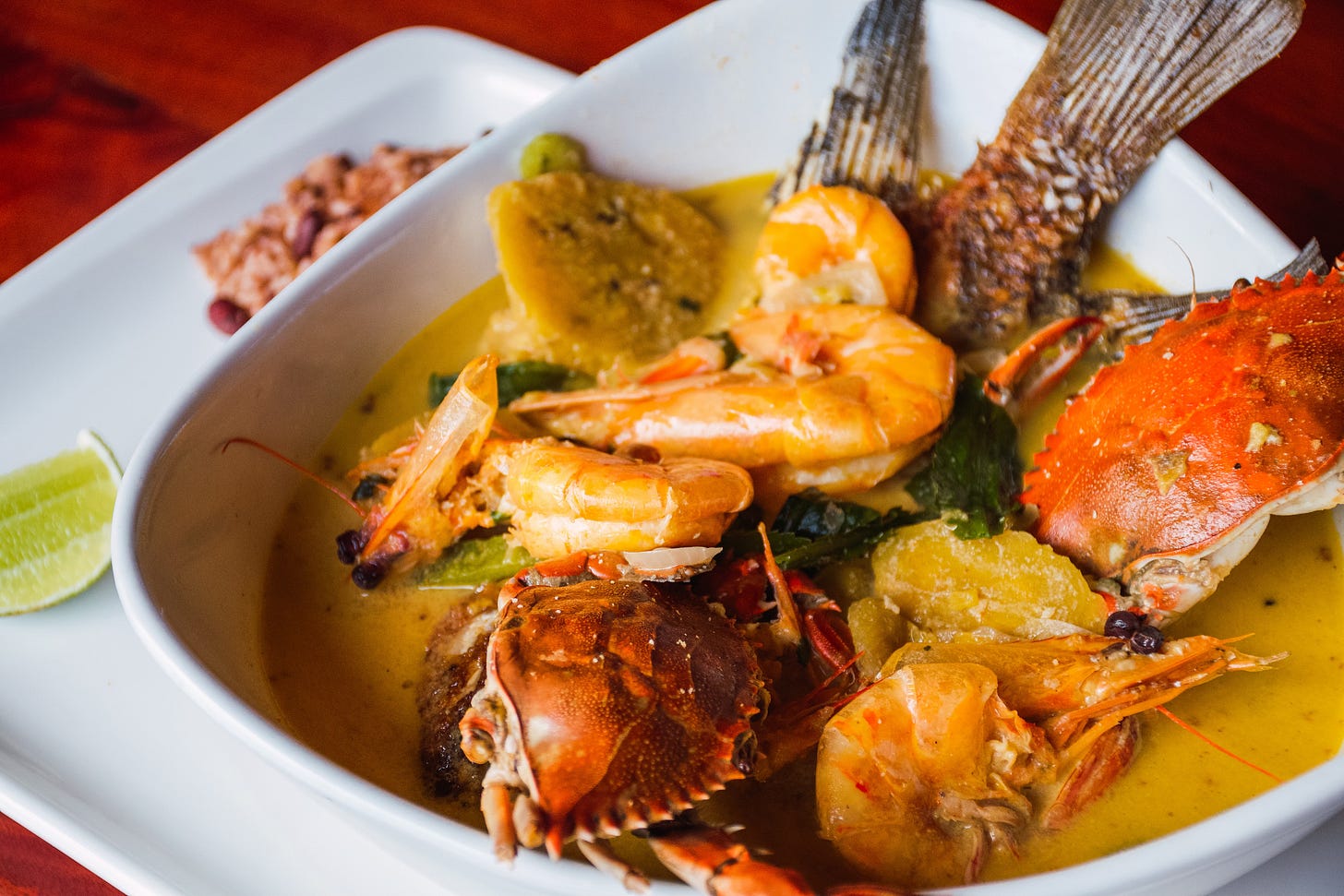
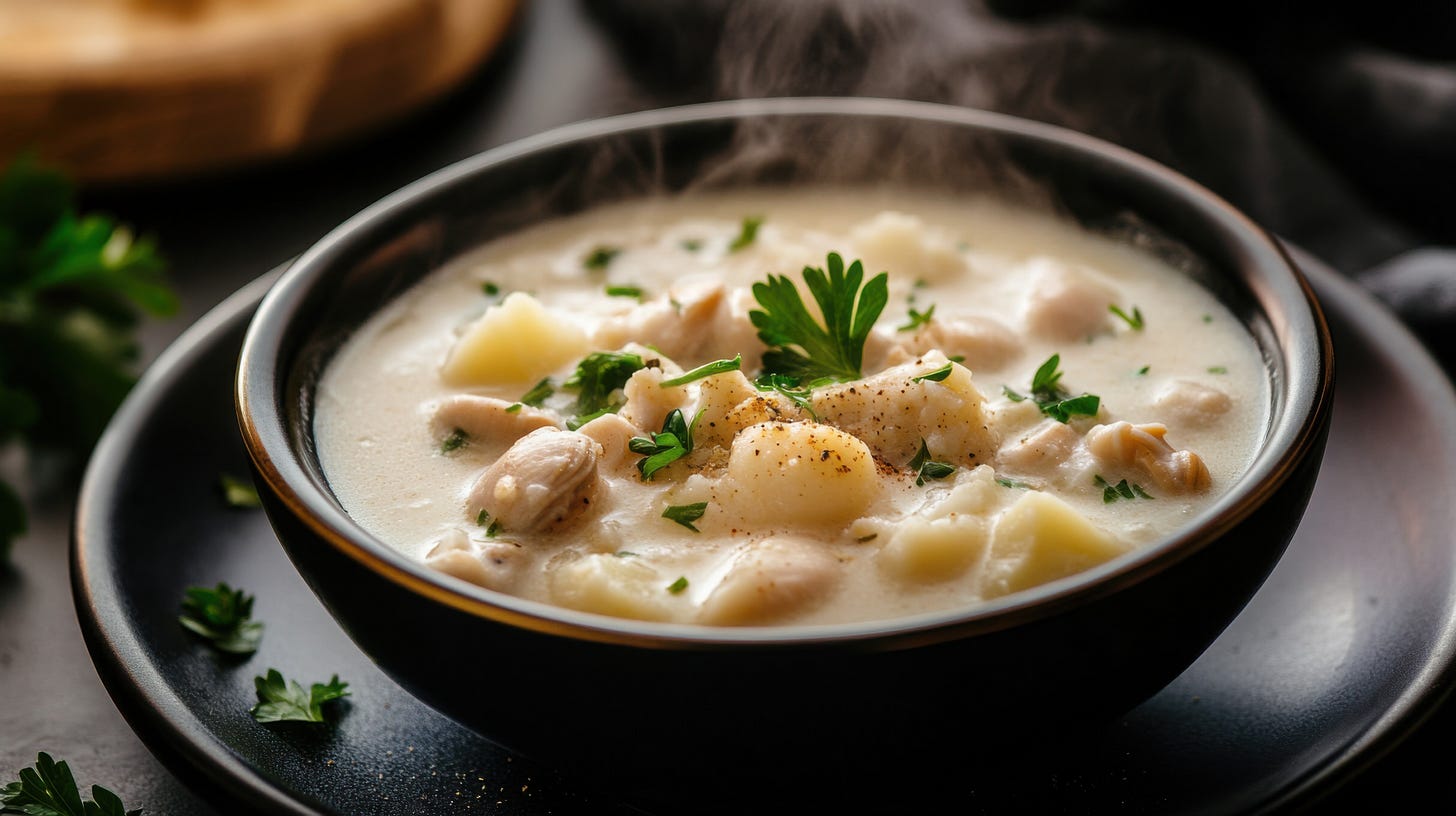
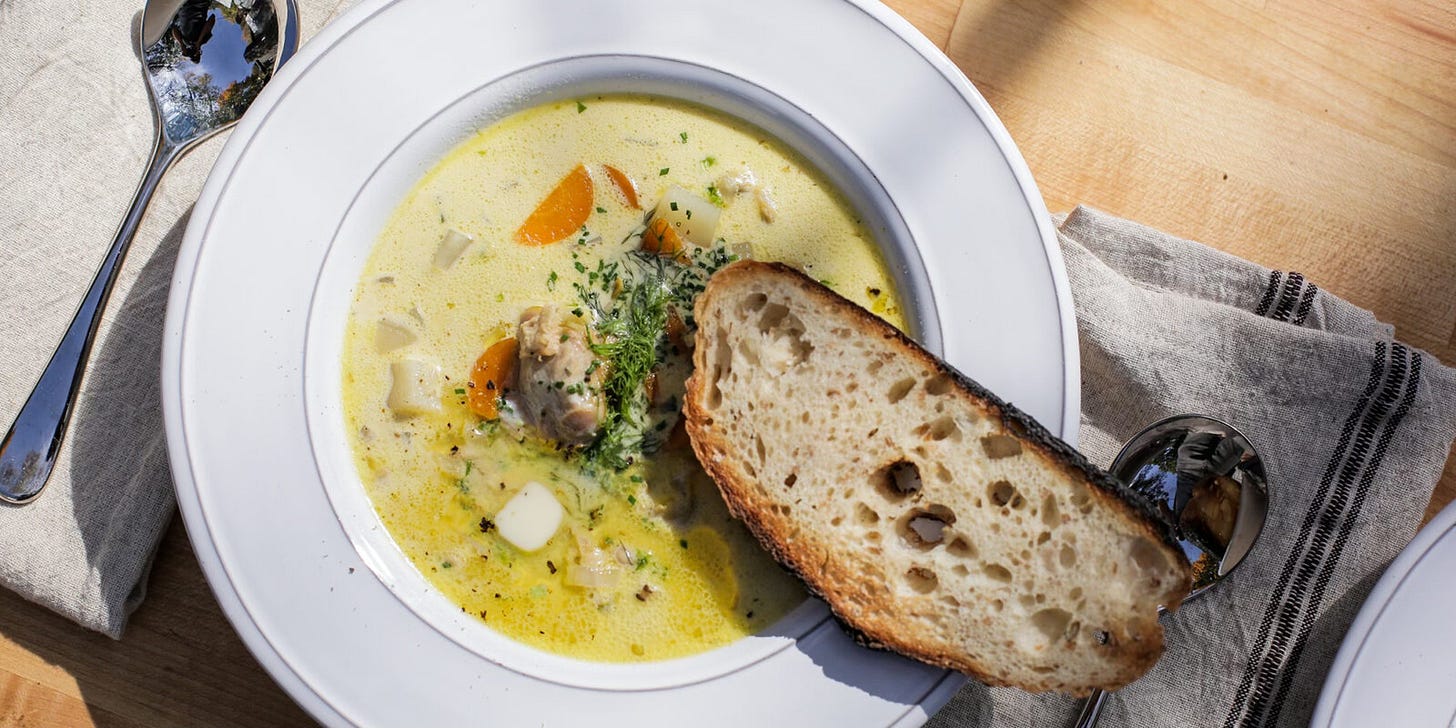


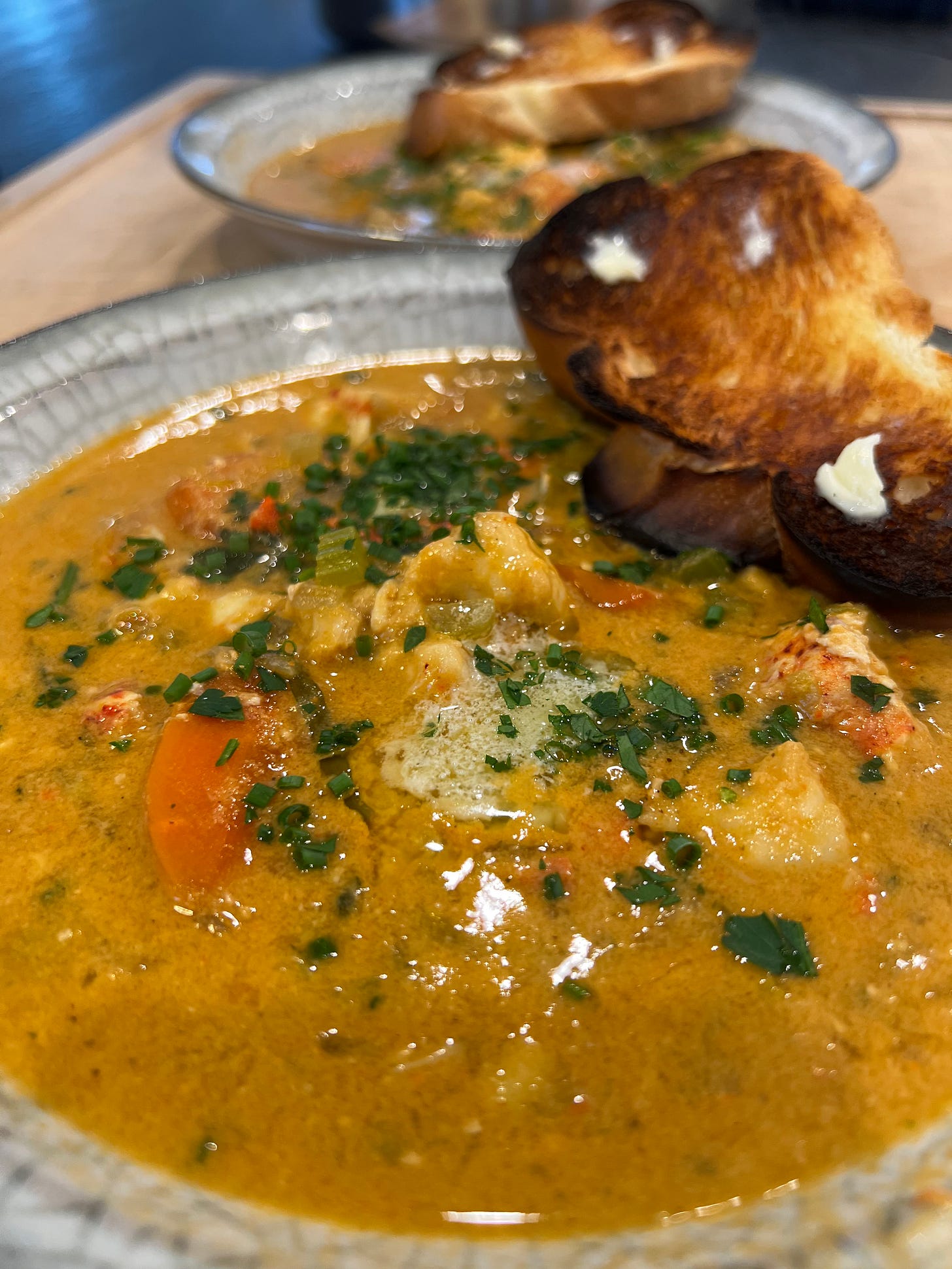
Love this! Reminds me of the chilled oysters and cucumber mignonette recipe I adapted from hit NYC restaurant Via Carota for easy home cooking!
check it out:
https://thesecretingredient.substack.com/p/get-via-carota-recipe-chilled-oysters-with-cucumber-mignonette
Shellfish galore.
https://open.substack.com/pub/abforbes/p/shellfish-galore?r=yn8c0&utm_medium=ios